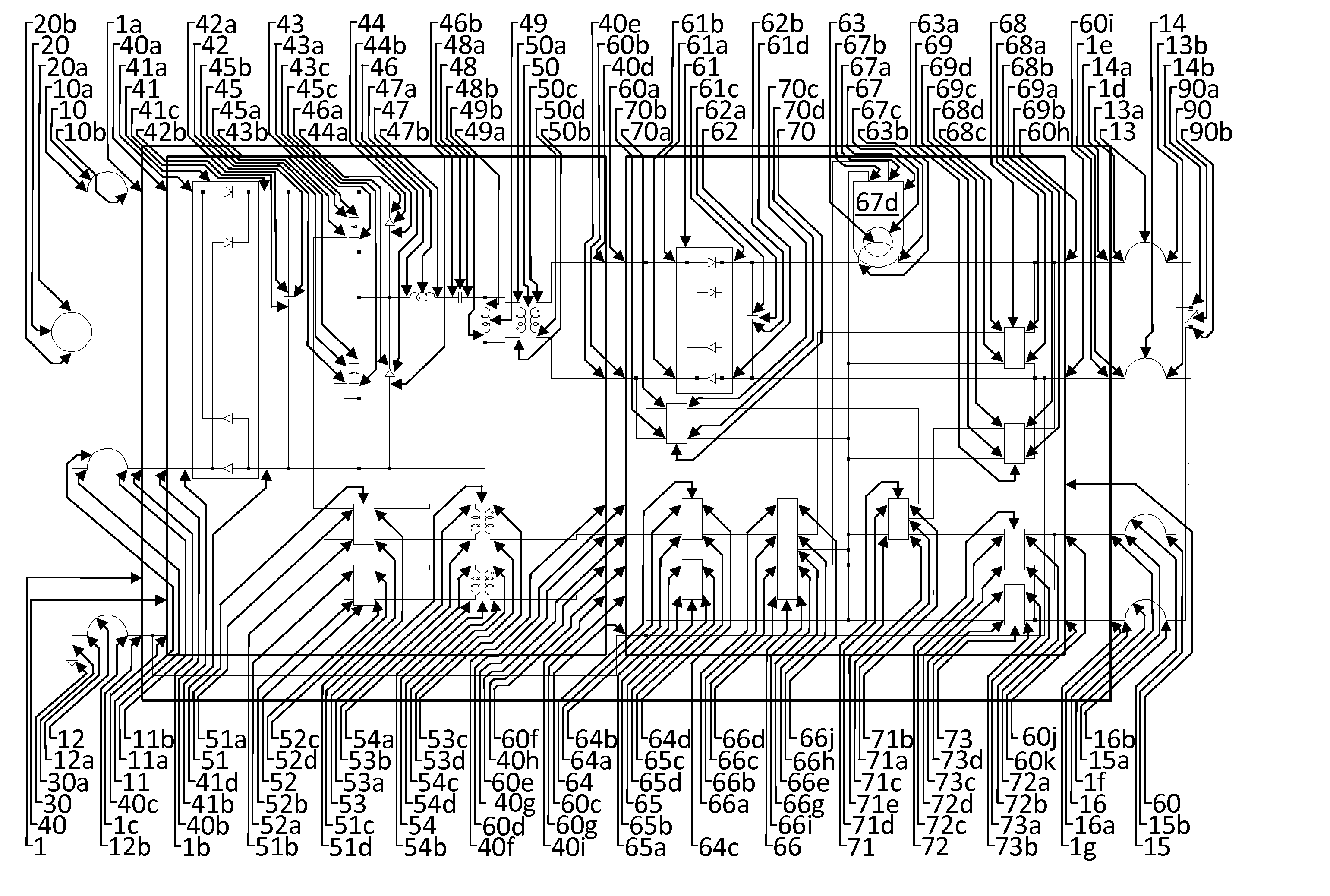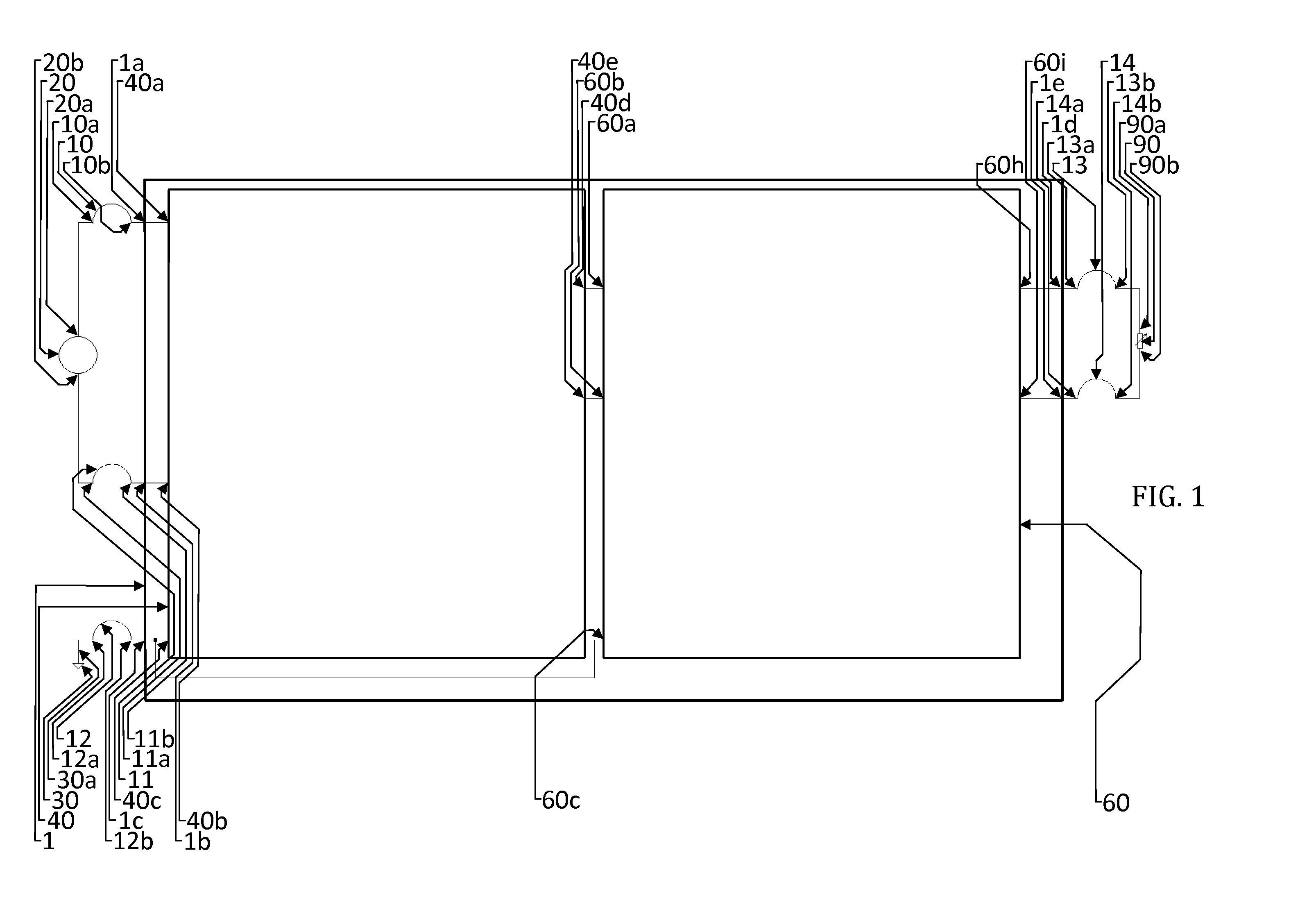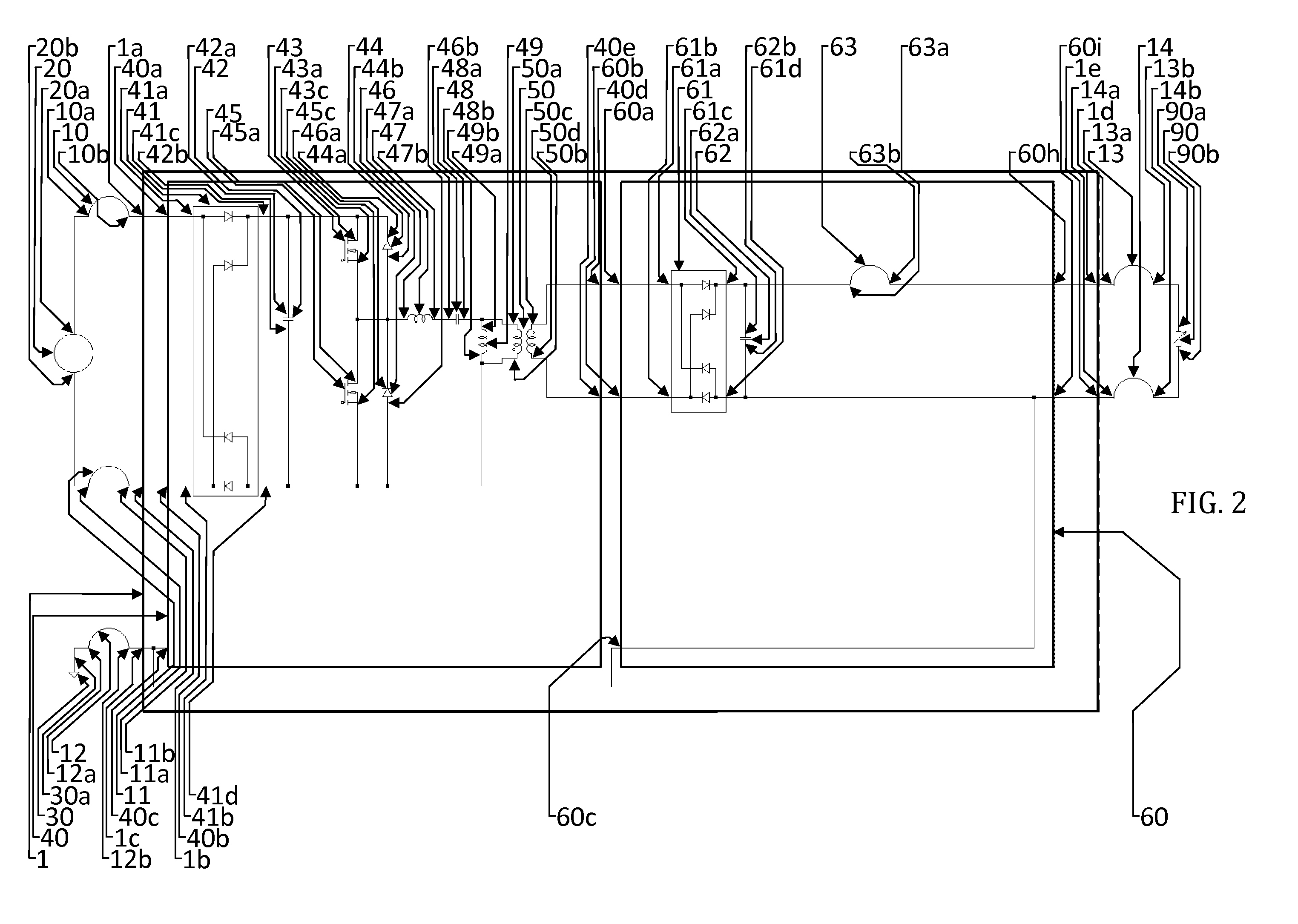Utility for full wave rectified current-fed class of DC galvanically isolated DC-to-DC power conversion topologies allows reduction of working voltage magnitudes and improvement to efficiency for secondary circuits
a technology of dc galvanic isolation and dc, which is applied in the direction of electric variable regulation, process and machine control, instruments, etc., can solve the problems of increasing the risk of electric shock to operators who come into physical contact with bare conductors in said secondary circuit(s), increasing the risk of fire or explosion in certain environments, and the requirement of a secondary circuit housing may pose a difficulty, so as to reduce the cost of manufacture and improve reliability. , the effect of reducing
- Summary
- Abstract
- Description
- Claims
- Application Information
AI Technical Summary
Benefits of technology
Problems solved by technology
Method used
Image
Examples
Embodiment Construction
[0064]The following description of the preferred embodiments refers to a power conversion circuit and method which are useful for improving efficiency of conversion of power for use by a means of power consumption, herein also referred to as a load, and reducing maximum magnitude working levels of across-variable, herein also referred to as working voltages, of means of secondary sources, herein also referred to as secondary circuits. The load can be any type or combination of circuit elements capable of supporting the designed-for output voltage level.
[0065]It should be understood that the preferred embodiment of the power conversion circuit employs an ‘LLC’ topology which provides across-variable-compliant through variable, herein also referred to as voltage-compliant current, sourcing of power input to the secondary circuit, and that there are several topologies available for this purpose of providing a voltage-compliant current source at the means of functional connectivity, her...
PUM
 Login to View More
Login to View More Abstract
Description
Claims
Application Information
 Login to View More
Login to View More - R&D
- Intellectual Property
- Life Sciences
- Materials
- Tech Scout
- Unparalleled Data Quality
- Higher Quality Content
- 60% Fewer Hallucinations
Browse by: Latest US Patents, China's latest patents, Technical Efficacy Thesaurus, Application Domain, Technology Topic, Popular Technical Reports.
© 2025 PatSnap. All rights reserved.Legal|Privacy policy|Modern Slavery Act Transparency Statement|Sitemap|About US| Contact US: help@patsnap.com



